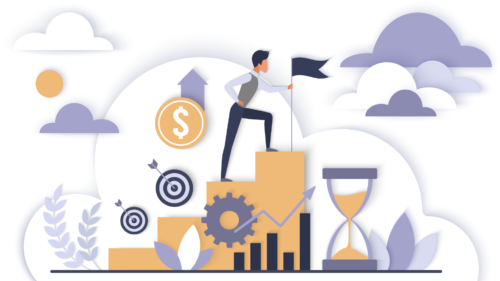
Upskilling and Reskilling: How to Prepare Your Workforce for Future Challenges
In today’s dynamic global economy, the landscape of work is constantly evolving. Technological advancements, shifts in consumer behavior, and economic transformations are reshaping industries and the skills required to succeed within them. For organizations to remain competitive and adaptable in this rapidly changing environment, investing in the upskilling and reskilling of their workforce has become not just advantageous but essential. This blog explores the importance of upskilling and reskilling, talks about practical strategies for implementation, and discusses the benefits for both employees and employers.
Understanding the Need for Upskilling and Reskilling
The idea that careers follow a straight path within one industry or job role is becoming outdated. Today, professionals are expected to be agile, adaptable, and equipped with a diverse set of skills that can evolve alongside technological advancements and market demands. Upskilling involves enhancing existing skills to meet current job requirements more effectively, while reskilling refers to learning new skills to transition into entirely different roles or industries.
The World Economic Forum’s Future of Jobs report highlights the accelerating pace of change in the labor market, estimating that by 2025, over half of all employees will require significant reskilling or upskilling to meet the demands of emerging job roles. This shift underscores the importance of continuous learning and development as a strategic imperative for both individuals and organizations.
Strategies for Implementing Upskilling and Reskilling Programs
Implementing effective upskilling and reskilling initiatives requires a thoughtful and comprehensive approach. Here are key strategies to consider:
- Assessment of Current Skills and Future Needs: Begin by conducting a thorough assessment of your organization’s current workforce skills. Identify existing strengths and areas for improvement, and align these with projected future skill requirements. This gap analysis serves as the foundation for designing targeted upskilling and reskilling programs.
- Development of a Learning Roadmap: Create a structured learning roadmap that outlines the skills and competencies employees need to develop. Tailor these pathways to individual career aspirations and organizational objectives. Consider incorporating a mix of formal training, experiential learning opportunities, mentorship programs, and access to online learning platforms.
- Integration of Digital Learning Technologies: Leverage technology to deliver scalable and personalized learning experiences. Online courses, virtual reality simulations, mobile learning apps, and AI-driven learning platforms can provide flexible options for employees to acquire and practice new skills at their own pace. These technologies also enable real-time feedback and assessment, enhancing the effectiveness of learning initiatives.
- Promotion of a Culture of Lifelong Learning: Foster a workplace culture that values continuous learning and professional growth. Encourage employees to take ownership of their development journey and provide support through resources, feedback mechanisms, and recognition of achievements. Leadership commitment and visible support for learning initiatives are crucial in reinforcing the importance of upskilling and reskilling across the organization.
- Collaboration with External Partners: Forge strategic partnerships with educational institutions, industry associations, and training providers to access specialized programs, certifications, and expert knowledge. These partnerships can offer insights into emerging trends, best practices, and industry standards, ensuring that learning initiatives remain relevant and aligned with evolving market demands.
Benefits of Upskilling and Reskilling Initiatives
Investing in upskilling and reskilling programs yields significant benefits for both employees and organizations:
Enhanced Employee Engagement and Retention: Providing opportunities for professional development demonstrates organizational commitment to employee growth and career advancement. This, in turn, fosters a sense of loyalty, motivation, and job satisfaction among employees, reducing turnover rates and enhancing overall workforce stability.
Improved Organizational Agility and Adaptability: A skilled workforce is better equipped to respond to changing market conditions, technological advancements, and business challenges. By cultivating a diverse range of competencies and expertise, organizations can foster innovation, drive operational efficiency, and maintain a competitive edge in the marketplace.
Mitigation of Skills Gaps and Future-Proofing: Proactively addressing skills gaps through upskilling and reskilling initiatives helps mitigate risks associated with technological disruptions and economic uncertainties. By preparing employees for future job roles and industry shifts, organizations can position themselves for sustained growth and resilience in the face of evolving business landscapes.
Cultivation of a Learning Organization: Embedding a culture of continuous learning and knowledge sharing promotes a dynamic and adaptive organizational environment. Employees are encouraged to stay abreast of industry developments, embrace new technologies, and contribute to ongoing improvements in processes and practices.

Challenges and Considerations
While the benefits of upskilling and reskilling are compelling, organizations may encounter challenges in implementing these initiatives effectively. Common obstacles include budget constraints, time limitations, resistance to change, and ensuring alignment between individual development goals and organizational priorities. Overcoming these challenges requires strategic planning, leadership commitment, stakeholder engagement, and a willingness to adapt learning strategies based on feedback and evolving needs.
Wrapping Up
Upskilling and reskilling are essential strategies for building a resilient, adaptable, and future-ready workforce. By investing in continuous learning and development, organizations can empower their employees to navigate complexities, embrace innovation, and drive sustainable business growth. Embrace the opportunity to transform challenges into opportunities by prioritizing skill development and creating a culture that values growth, agility, and lifelong learning. Together, we can build a workforce prepared to thrive in an increasingly dynamic and interconnected global economy.
To receive and stay updated about related content:





